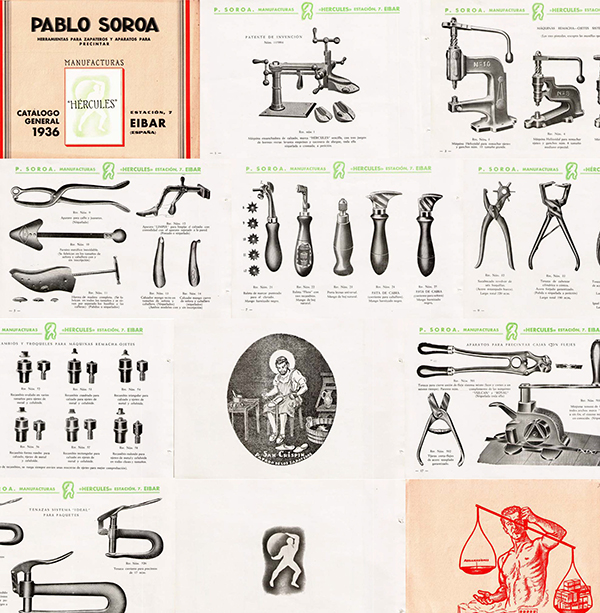
This distinctive building was built in 1938 by the architect Raimundo Alberdi Abaunz at the request of the industrialist Pablo Soroa, who was looking for a building to house his new factory. The company had been founded at the beginning of the 20th century in the nearby village of Elgeta, where production was at first focussed on screws and hardware, both of which were closely linked to the main industrial activity of the area, namely firearms. The firm soon moved down to Eibar and set up shop, like so many other businesses at the time, in the area around the train station. In those days, Station St (or EstaziÃÂÃÂÃÂño kalea) was a hive of activity with many small businesses operating from ground floor premises in blocks of flats.

With time, the firm specialised its range of goods and by 1932 production almost exclusively consisted of hand tools, under the brand name HÃÂÃÂÃÂércules, destined mainly for the growing shoe trade. As years passed, tool manufacturing gradually gave way to new designs, following an evolution common to all Eibar businessmen: the skills acquired by producing a variety of products were then used to create increasingly specialised goods which combined workersÃÂâÃÂÃÂÃÂàknow-how and the design and innovation required by new markets. Thus, without losing the custom of shoemakers whom they had supplied over the years, they specialised in footwear wideners, a product that helped increase the renown of the company and has been distributed since 1994 under the trademark Heinza. It is also by this name that the building in Matsaria is still known today.
The workshops of Pablo Soroa ÃÂâÃÂÃÂÃÂàHeinza constitute one of the most distinctive landmarks of ÃÂâÃÂÃÂÃÂÃÂthe other EibarÃÂâÃÂÃÂÃÂàwhich lies on the other side of the railway line. Moreover, the building is a silent witness to the transformation EibarÃÂâÃÂÃÂÃÂÃÂs industry underwent during the 30s and 40s, not only in terms of methods of production but also the architectural characteristics of factories and workshops. Like so many other Eibar businessmen, after the Civil War Pablo Soroa faced a turning point: his workshops were in ruins after the bombardment by rebel troops and he had to look for a new location for his business. He opted, as did many other Eibar entrepreneurs at that moment, to set up his business in Matsaria, a neighbourhood separated from the town centre by the railway line and which in the late thirties became one of the fastest growing areas of the town: companies like ABC, Acha y Basterra, Barrenechea, OlaÃÂÃÂÃÂñeta y Juaristi ÃÂâÃÂÃÂÃÂàBOJ and Pablo Soroa all established their businesses there.
The new building was designed by the architect Raimundo Alberdi, one of those most engaged in the reconstruction of Eibar after the Civil War and responsible for a large number of the buildings that make up the townÃÂâÃÂÃÂÃÂÃÂs skyline. The building shows some of the most typical architectural features in Eibar, namely the coexistence of industrial activity ÃÂâÃÂÃÂÃÂàon the first two floors ÃÂâÃÂÃÂÃÂàand residential use, on the upper floors. iler berrian: industria, beheko bi solairuetan, eta etxebizitza, goiko bietan.

To combine the two, Raimundo Alberdi designed a quadrangular-shaped building with a reinforced concrete structure; however, rejecting the usual flat terraced roof, which would enable further floors to be added ÃÂâÃÂÃÂÃÂàcommon to most factories and workshops in Eibar - Alberdi settled on a more traditional hip roof with flat tiles
This is the only concession by the architect to traditional residential construction, as the building otherwise displays the usual features common to industrial architecture in the 1930s: large windows to let in plenty of natural light, sobriety of design and lack of decorationÃÂâÃÂÃÂÃÂæ In fact, the only artistic licence the architect allowed himself was the tiered windows topped with lintels that mark the stairway, a touch that makes the building stand out as one of the most representative constructions of Matsaria and Eibar as a whole.
 Anemona Studioa, 2015, Eibar www.anemonastudioa.com
Anemona Studioa, 2015, Eibar www.anemonastudioa.com Ondartez www.ondartez.com
Ondartez www.ondartez.com